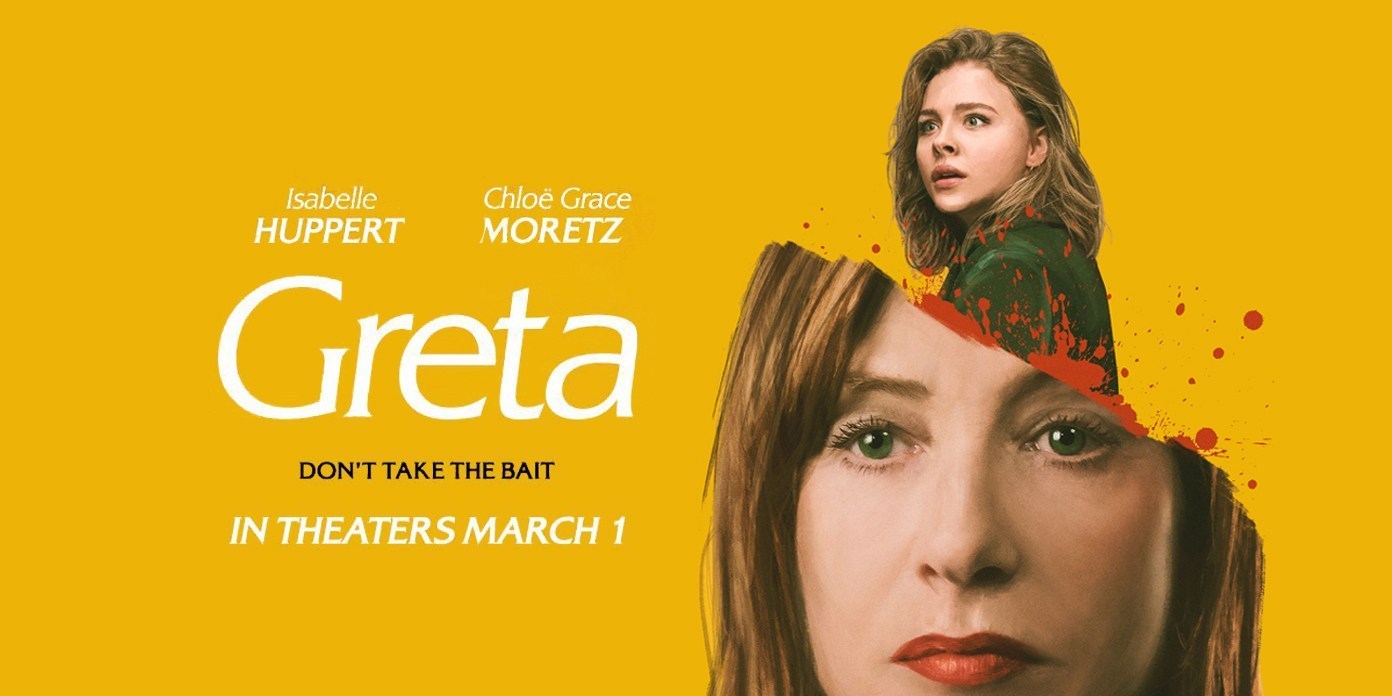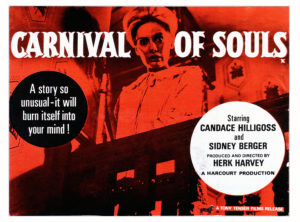 [Warning: Ahead there be spoilers. Though, it must be noted, the terror of both Carnival of Souls and The Witchrelies more on atmosphere than shocking plot twists.]
[Warning: Ahead there be spoilers. Though, it must be noted, the terror of both Carnival of Souls and The Witchrelies more on atmosphere than shocking plot twists.]
There are few experiences that can match the slow-motion, attenuated terror of growing up in a system where you don’t belong. Indeed, horror has long served as an ideal vehicle for illustrating the sense of isolation that comes from not fitting in. From the very beginning, films like 1920’s The Golem, 1923’s The Phantom of the Opera and The Hunchback of Notre Dame, 1931’s Frankenstein and 1932’s Freaks were all, in some way, about misfits born into places that didn’t want them. More recently, 2015’s Get Out used horror to show how terrifying it can be to be black in a white man’s world.
When the setting is transplanted to a frontier environment—or a city that has been forged in the hinterlands—the effect can be even more unsettling. And sometimes, the “freaks” look an awful lot like everyone else. While 1962’s Carnival of Souls and 2015’s The Witch may not, at first blush, seem to have a lot in common, if we dig deeper we find that both films explore the horror of being “the wrong kind of woman” in a frontier world.
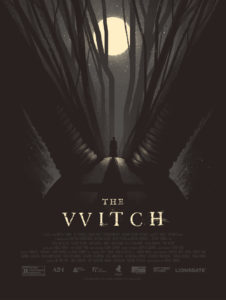 I grew up in the last part of the continental United States to be settled by whites. Until the 1880s, the Comanche were still active in the Panhandle of Texas and few Anglos were interested in settling a place where natural resources were few, but the likelihood of being slaughtered was high. Today, Amarillo, Texas, doesn’t much resemble the frontier. We’ve built up plenty of strip malls and tract housing developments and megachurches, woeful legacies in a land where the fearsome and fascinating Comanche once roamed.
I grew up in the last part of the continental United States to be settled by whites. Until the 1880s, the Comanche were still active in the Panhandle of Texas and few Anglos were interested in settling a place where natural resources were few, but the likelihood of being slaughtered was high. Today, Amarillo, Texas, doesn’t much resemble the frontier. We’ve built up plenty of strip malls and tract housing developments and megachurches, woeful legacies in a land where the fearsome and fascinating Comanche once roamed.
One thing the Comanche understood was the importance of folding outsiders into their way of life. Recollections of Comanche war parties describe Kiowa and Apache braves riding alongside the tribe. Perhaps the most famous case of Comanche assimilation was that of Cynthia Ann Parker, the Anglo mother of Comanche Chief Quanah Parker. In 1836, at age 10, Cynthia Ann was abducted from the Fort Parker settlement in north Texas by a Comanche raiding band. Cynthia grew up among the Comanche and eventually married Chief Peta Nocona. When Texas Rangers “rescued” her 24 years later, she was dragged unwillingly back to so-called civilization, where she became heartbroken and eventually died of influenza, forced to leave her family and the only life she understood.
Thus the Comanche, despite their staggeringly violent lifestyle, were at times more welcoming to outsiders than those who replaced them. At their worst, Westerners can be a hard group, little given to open-mindedness or outsider-ism. Many of us who grew up as creative types or artists or intellectuals in the American West bear the scars, either real or imagined, of coming of age in a place where drawing attention to oneself—intentionally or otherwise—is frowned upon. Here on the frontier, while we now spend a lot of time sitting around in air-conditioned chain restaurants, the pinnacle of humanity is still often considered to be the Marlboro Man with a Bible in his hand. Minorities, gays, trans people, and free-thinking women—folks, that is, who don’t fit into the White Western conqueror narrative—are often ostracized, to the point where they kill themselves. This is not an overstatement. Here, according to the U.S. Census Bureau, are the ten states with the highest suicide rates, per capita.
- Montana
- Alaska
- Wyoming
- New Mexico
- Utah
- Nevada
- Idaho
- Oklahoma
- Colorado
- South Dakota
Here it is in a map, for you visual learners:

Talk about bloody frontiers. Granted, some of this can be attributed to the availability of guns in the American West. But that can’t explain it all. For example, the District of Columbia has the second highest per capita rate of gun ownership in the US, but the lowest suicide rate in the nation. Likewise, Alabama and Arkansas have top-ten gun ownership rates but do not crack the suicide top ten.
 This is all a long way of saying that, despite the pervasive myth of rugged individualism in frontier lands, it is precisely in places like the Utah of Carnival of Souls and the unpopulated frontier of The Witch where lack of conformity can prove deadly.
This is all a long way of saying that, despite the pervasive myth of rugged individualism in frontier lands, it is precisely in places like the Utah of Carnival of Souls and the unpopulated frontier of The Witch where lack of conformity can prove deadly.
If you’ve never seen Carnival of Souls, you’ve probably seen bits of it. Often, it’s playing in the background of other horror movies, on in-scene televisions or movie screens. Herk Harvey’s low-budget masterpiece—the director’s only film—would become one of the most influential horror movies of the 1960s, guiding later horror meisters like George Romero and David Lynch. Director Herk Harvey was influenced by European auteurs like Bergman and Cocteau, but it was the marriage of Old-World Existentialism with Harvey’s day job as a maker of industrial films that forged Carnival’s unique blend of Western can-do-ism and grim isolation.
The movie concerns a woman, Mary Henry, who is nearly killed—or does she in fact die?—in a drag-racing accident in rural Kansas. Wanting a change, she takes a job as an organist at a Methodist church in Salt Lake City (SLC), where she moves into a small boarding house. In SLC, she finds herself haunted by a bizarre phantom in a business suit, while also being strangely drawn to an eerie abandoned pavilion that juts out into the Great Salt Lake.
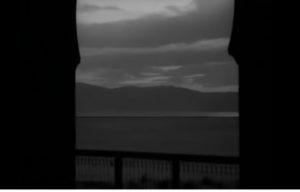 The film’s lingering impact stems from how Herk Harvey used low-budget constraints to his advantage. Often, the vocal track doesn’t match the lips of the actors. The clacks of footsteps are delayed. At times, after a watery effect passes across the screen, Mary slips into a realm where she is neither seen nor heard by the white, middle-class urbanites who continue performing their work in department stores and at ticket counters. The cumulative effect is hallucinatory and infectious.
The film’s lingering impact stems from how Herk Harvey used low-budget constraints to his advantage. Often, the vocal track doesn’t match the lips of the actors. The clacks of footsteps are delayed. At times, after a watery effect passes across the screen, Mary slips into a realm where she is neither seen nor heard by the white, middle-class urbanites who continue performing their work in department stores and at ticket counters. The cumulative effect is hallucinatory and infectious.
Harvey, who was raised in both Colorado and Illinois, would blend the Midwestern hucksterism of his industrial films with the sublime dread triggered by the vast empty spaces of the American West to uncanny effect. Inside her boarding-house bedroom, Mary is haunted both by the ghostly-white man and by the view of the salt flats from the deck of the lakeside pavilion.
Throughout the movie, authoritarian types disregard Mary. A policeman ignores (or cannot hear) her pleas for help. A minister fires her for her “sacrilegious” organ playing. A psychiatrist tells her she’s imagining things. (Later, this same psychiatrist will be switched out for the phantom stalker). Nearly everyone mansplains to her—even the women. The aggregate result: a sense of foreboding and inescapable isolation, generated not by the undead, but by the living—though living is a poor term for the middle-class automata who populate the film.
While the besuited ghoul provides plenty of scares, the true villain of Carnival of Souls might be the man who occupies the room across from hers at the boarding house. Mr. Linden is the Platonic ideal of the creepy, handsy male oppressor, standing six inches too close, or trying to get Mary drunk, or watching her disrobe through a door crack. Linden is the avatar of the entire Western patriarchy, so suffocating in his narcissism that Mary has no choice but to flee into the arms of the waltzing undead.
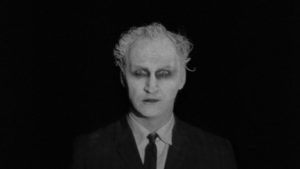 Mary’s greatest “crime” within this frontier framework is her lack of a sex drive. Throughout Carnival, she shows no interest in the advances of men. She wants only to be left alone. She is not wife material, nor church-marm material, nor pleasure material. Thus, she has no place, she is unseen. She might as well be dead. “It was as though for a time I didn’t exist,” Mary says at one point, after vanishing from public view. “As if I had no place in the world.”
Mary’s greatest “crime” within this frontier framework is her lack of a sex drive. Throughout Carnival, she shows no interest in the advances of men. She wants only to be left alone. She is not wife material, nor church-marm material, nor pleasure material. Thus, she has no place, she is unseen. She might as well be dead. “It was as though for a time I didn’t exist,” Mary says at one point, after vanishing from public view. “As if I had no place in the world.”
Of course, the biggest unseen force in the film is not the undead (who are very much seen) but the Mormon church. The majority of the film takes place in environments built by Latter-Day Saints and the asphyxiating atmosphere of Carnival of Souls is that of an environment built by Good Clean Christians for other Good Clean Christians (Herk Harvey employed extras from the Mormon School of Modern Dance to populate the final ballroom scene). Mary Henry damns herself when she tells Mr. Linden, “To me a church is just a place of business.” To which Linden replies, “Talking like that, don’t get you nightmares?”
The irony, of course, is that he has no idea the nightmare she’s living. The entire world of Carnival of Souls feels like a place of business, a massive transactional marketplace occupied by Capitalist zombies, built in the middle of a frontier. And poor Mary isn’t interested in buying anything.
Mary Henry is an outcast, who finds herself fired from a Methodist church which is itself an oddity in a city built by Mormon religious settlers who had themselves been cast out of several previous environments. The Witch’s Thomasin, too, is an oddball among outcasts, who are themselves outsiders.
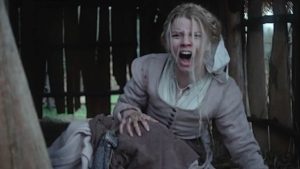 The Witch is the tale of a Puritan Separatist family who begin to turn on one another after fears arise that a witch has cursed them. While the Witch herself commits her share of sins—as does Satan himself, in the guise of a goat named Black Phillip—the majority of the film’s violence is of the intra-familial variety. Thomasin is a girl of imagination and budding sexuality, who never quite fits in with the rest of her family, despite her best efforts. Her family are themselves outcasts, having been banished from a larger community of Calvinist Puritans in 17thcentury New England. And those Puritans, of course, had split from the Protestant church of England—which had itself broken away from the Church of Rome. Thus, Thomasin represents the final splinter in a long series of schisms. After this long chain of fractures, when the singularity of one lonely girl is reached, there is nothing left to break but the spirit inside of the girl.
The Witch is the tale of a Puritan Separatist family who begin to turn on one another after fears arise that a witch has cursed them. While the Witch herself commits her share of sins—as does Satan himself, in the guise of a goat named Black Phillip—the majority of the film’s violence is of the intra-familial variety. Thomasin is a girl of imagination and budding sexuality, who never quite fits in with the rest of her family, despite her best efforts. Her family are themselves outcasts, having been banished from a larger community of Calvinist Puritans in 17thcentury New England. And those Puritans, of course, had split from the Protestant church of England—which had itself broken away from the Church of Rome. Thus, Thomasin represents the final splinter in a long series of schisms. After this long chain of fractures, when the singularity of one lonely girl is reached, there is nothing left to break but the spirit inside of the girl.
Carnival of Souls and The Witch share several commonalities. They are both female-driven horror narratives, set in frontier (or former frontier) environments, filmed on shoestring budgets, where the locations do a good deal of the work, and where the dangers derive more from the living than from the supernatural elements. But it’s when considering how the films are opposites that the true nature of frontier isolation comes into relief. While Carnival’s Mary has little interest in participating in the patriarchal society surrounding her, Thomasin tries to fit in with the family structure—to little avail. While Mary has no sex drive in a world that demands it of her, Thomasin seems sexualized in a world where eroticism is verboten. (“Our daughter hath begot the sign of her womanhood,” says Thomasin’s mother Katherine, in an overheard discussion with her father William about whether Thomasin should be sent away.) And, while Mary has no interest in religion, Thomasin continually prays for mercy from God, and is left unheard.
It is from this last word—unheard—that both movies derive their terror. Both films concern women in the wilderness, crying out for someone to hear them, for someone to rescue them. And in both films, the only “saviors” to be found are of the supernatural variety; the waterlogged zombies in Carnival of Souls, and, in the case of The Witch, Satan himself.
Watching the finale of The Witch, as Thomasin enters a coven of witches and ascends into skyborne worship of Satan, viewers may find themselves thinking, Well, it beats living at home. Likewise, in Carnival of Souls, we see Mary Henry dragged down into the world of the undead, and we can’t help thinking, Well, it beats Utah.
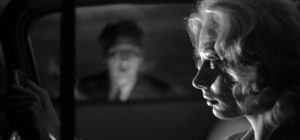 Frontiers are often settled by outcasts. And outcasts in groups—especially religious outcasts in groups—have a tendency to be the ruthlessly unforgiving of anomalies within their midst. When trudging into a harsh environment, settlers have good reason to require that everyone in the party be trustworthy. And requiring trustworthiness of your companions often translates to needing them to be similar, if not damn near identical. On the frontier, erratic or unusual behavior can lead to misfortune and death. This need for conformity can lead to an acute paranoia among settler communities. Indeed, this is how the term “witch hunt” came to be.
Frontiers are often settled by outcasts. And outcasts in groups—especially religious outcasts in groups—have a tendency to be the ruthlessly unforgiving of anomalies within their midst. When trudging into a harsh environment, settlers have good reason to require that everyone in the party be trustworthy. And requiring trustworthiness of your companions often translates to needing them to be similar, if not damn near identical. On the frontier, erratic or unusual behavior can lead to misfortune and death. This need for conformity can lead to an acute paranoia among settler communities. Indeed, this is how the term “witch hunt” came to be.
And when societies are set up this way from the very beginning, with a dire focus on sameness and knowability, the aftereffects can linger for generations. As strip malls and tract houses bloom in the desert, “frontier misfits” gain a real notion that something is off, that they are still in danger, though the natives have been relocated and the wolves have ceased howling. On the frontier there is a sense that, when the monsters arrive, oddballs like Mary and Thomasin will be eaten first. The great tragedy is that, while you wait for the witch to come out of the woods, while you await the phantom’s ascent from the deep, the true monster may be sleeping in the room across the hall.
Three years ago, Jonathan Baker quit his publishing job in New York City and returned to his hometown of Canyon, Texas, to write full time. He currently works as a news curator for High Plains Public Radio and writes feature stories for Amarillo and Lubbock magazines, and his fiction recently appeared in (mac)ro(mic), Adelaide, and Hypnopomp. He has also been featured on The Other Stories podcast.

